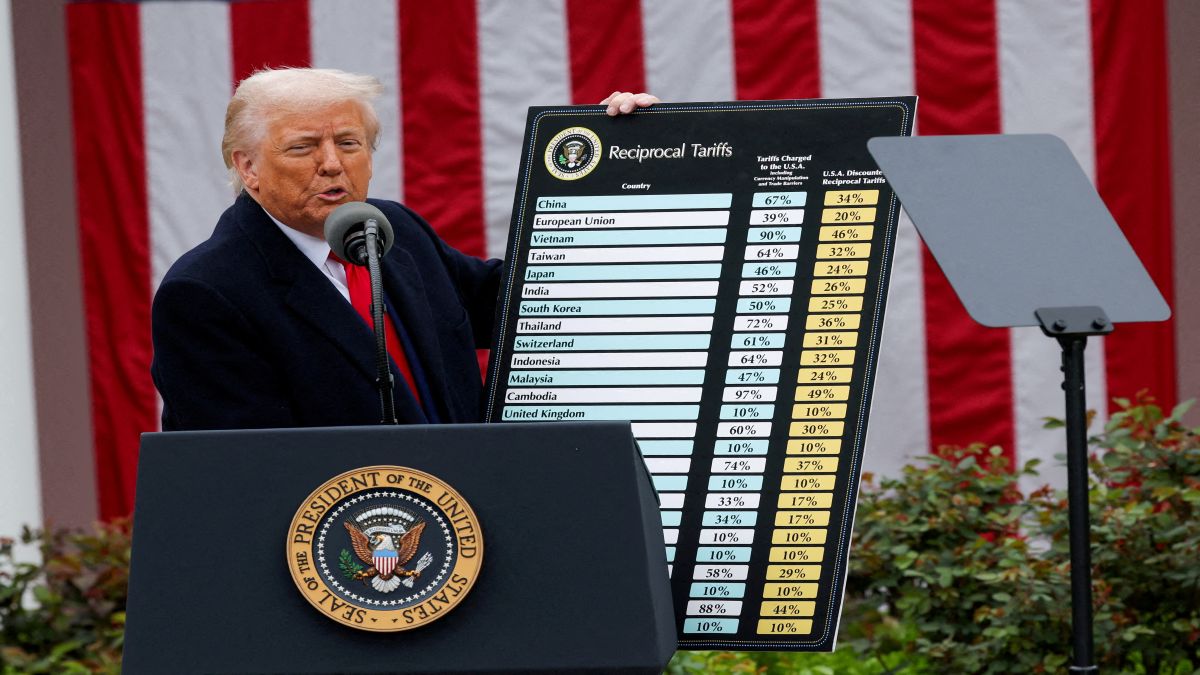There’s a profound economic misconception in Trump’s tariff policy. It does indeed highlight a serious problem in international trade theory in a world of increasing returns to scale, but that consideration does not apply to countries like India and Vietnam. These are genuinely complementary with the US economy, and specialisation between them is mutually beneficial.
The only reasonable complaint against them is their higher level of tariffs against US exports to them compared to US tariffs on imports from them. But the differential between their tariff levels with the US is not overlarge. Thus, there’s no justification for applying a tariff level on them derived purely from the size of their overall trade surplus with the US, which is being calculated at 26 per cent for India.

India’s tariff levels on US products exported to it are in the range of 13.5-39 per cent, averaging 17 per cent, the higher level on agricultural products, and not 26-27 per cent, as claimed by Trump. India’s higher level of tariffs on imports of non-agricultural products can be justified on developmental grounds.
All countries, including the US, have used such high tariffs historically on the basis of infant industry protection. Any complaint against such infant industry protection can be advanced if the country using them has reached a particularly higher level of national per capita income, which India has not yet. There is an argument perhaps of Indian tariffs being reviewed by the sector to examine their level of maturity.
In addition, tariffs in general may not be appropriate for sustaining developing productive sectors for which the import coefficient is high. India, Vietnam and other developing countries are being targeted and sanctioned owing to US trade deficits with China, most of all, the EU, Canada and Mexico. The issue of Canada’s trade surplus with the US is puzzling because they are basically integrated into a free trade area.
In fact, both Canada and Mexico are signatories to a free trade agreement with the US (USMCA), and their commercial relationship cannot be reflexively judged on the basis of tariff levels. In the case of Canada, Trump’s complaints on trade are a bit like arguing California has a trade surplus with the rest of the US. Mexico’s trade surplus with the US also arises owing to the same free trade agreement between them.
It was intended to lower costs to US industry by outsourcing the supply of inputs to Mexico in order to cope with competition arising elsewhere, eg, Japanese manufacturing in sectors like cars at the time. In reality, all other countries are being subjected to Trump’s irrational tariff policies because of its substantial trade deficits with China and the EU. But the entire logic of international trade is that it does not result in bilateral trade being balanced with individual countries.
It’s the overall multilateral trade balance that matters, which means US deficits with some countries like India and Vietnam, in this case, should be balanced by surpluses originating elsewhere, eg, the EU, which is not a complementary economy to the US and China. The actual numbers for international trade show that Chinese trade surpluses are the real culprit in this trade disjuncture globally and not just for the US. In fact, India also has a major trade deficit with China, and India is responsible for more than 20 per cent of China’s total trade surplus, though India’s share of trade with China is much smaller.
China is engaged in wholesale subsidy of exports and dumping of products at prices that are totally unrealistic in many cases; a form of mercantilism that is China’s official trade policy with myriad visible and less visible subsidies (eg high savings rate created by policy) to its exports. Of course the US dollar is a reserve currency that has always been obliged to run trade and balance of payments deficits to facilitate the international trade of other countries! But, in reality, it’s the US which has precipitated its own excessive balance of payments deficits in order to fund domestic social programmes and spending on its military and foreign policy goals by running huge fiscal deficits. What remains and will remain an unresolved and vexatious issue is the dominance of increasing returns to scale in most manufacturing production and the effective global equalisation of the cost of capital, both of which subvert traditional trade theory.
The issues that arise as a result were addressed decades ago by James Brander, Barbara Spencer and Paul Krugman’s ideas on strategic trade policy that might justify policy intervention to protect one’s own national industries exposed to international competition. A final complexity in the current imbroglio is that most international trade in manufacturing is intrafirm and Trump’s current tariff policies are going to cause complicated disruptions to the supply chains of finished goods, even for the US. A more reasonable and sensible US policy option in response to unfair trade practices would have been to examine individual sectors that export subsidised and dumped goods and apply countervailing duties, which are permitted by existing trade rules.
The policies implemented by the US at present will prove very costly for the world economy, including the US, precipitating a retaliatory spiral and a global downturn. Its impact on hedge funds facing margin class owing to falling asset prices already portends a wider financial crisis that could be highly consequential. The writer taught international political economy for more than two decades at the London School of Economics and Political Science.
Views expressed in the above piece are personal and solely those of the author. They do not necessarily reflect Firstpost’s views..
Politics

How Trump’s puzzling trade tariff policies will affect India and world

A more reasonable US policy option in response to unfair trade practices would have been to examine individual sectors that export subsidised and dumped goods and apply countervailing duties, which are permitted by existing trade rules














